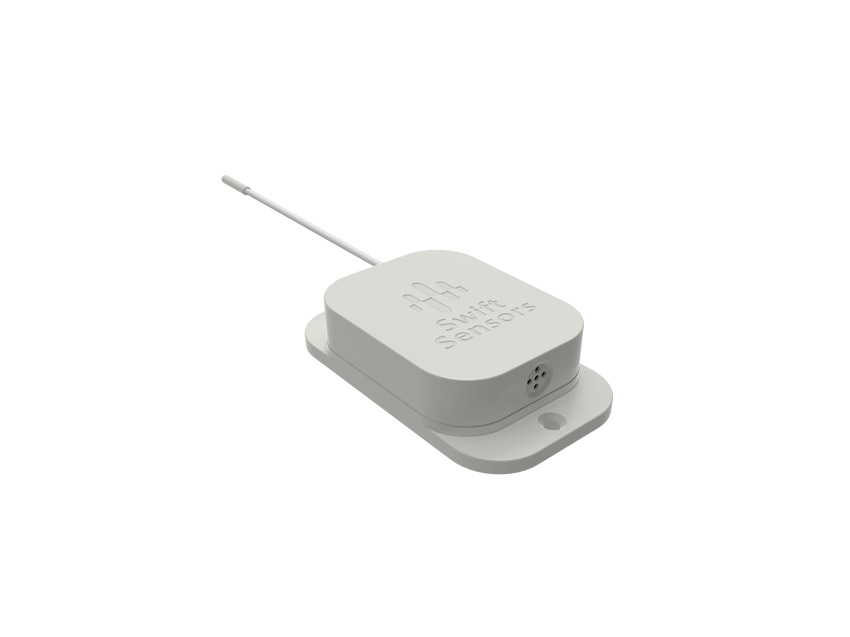No Programming Required: Start-Up Rolls Out Simple IoT Solution
A start-up says it wants to take the pain and cost out of IoT sensing applications by offering a unified solution that requires no programming skills or technical expertise.
December 8, 2016

A start-up says it wants to take the pain and cost out of Internet of Things (IoT) sensing applications by offering a unified solution that requires no programming skills or technical expertise.
Swift Sensors Inc. debuted its Cloud Wireless Sensor System today, saying it delivers IoT technology to those who can benefit from cloud-based sensing but haven’t had the capability to set up such systems up to now. “You don’t have to have a background in engineering or IT to set up our sensors,” Ray Almgren, chief marketing officer for Swift Sensors, told Design News. “The sensors will automatically find our bridge and our bridge will automatically, securely communicate with the cloud. So in a matter of an hour, you can outfit an application and be looking at the data.”
|
Sensors from Swift Sensors, Inc. can be used to monitor temperature, humidity, vibration, motion, activity, location, voltage, and electrical current in IoT applications. (Source: Swift Sensors Inc.) |
The Cloud Wireless Sensor System represents a departure from the norm, in that it is low-cost and requires no programming or network configuration. Its main components are matchbook-sized wireless sensors, a sensor bridge that links the sensors to the cloud, and a web-based dashboard that configures the system for data monitoring.
“No on-premises equipment is needed by customers to be maintained, debugged, or updated,” Almgren told us. “All of the data stays on the cloud. We maintain it and keep it up to date.”
Swift Sensors foresees the technology being used in applications ranging from food processing and transportation to restaurants and factories. It has already done beta applications with Kraft Heinz Co. in Champaign, Ill., which uses hundreds of its sensors to monitor temperatures and compressor vibrations in industrial coolers. The start-up’s sensors are also being employed by Sysco Foods and McDonalds, as well as an Austin, TX-based pizza restaurant for monitoring of refrigerators. Swift’s sensors can be used to monitor temperature, humidity, vibration, motion, activity, location, voltage, and electrical current.
“Users can be plant managers, restaurant owners, or building supervisors,” Almgren said. “This system will do real-time tracking of all their sensors.”
|
Sensors automatically find the Swift Sensor bridge, which securely communicates with the cloud. (Source: Swift Sensors Inc.) |
Individual sensors start at $59 and sensor bridges at $149. Users must also pay a $3-per-sensor monthly cloud subscription fee. The system allows for thresholds to be set for sensor data, and if the data goes outside those thresholds, the users automatically receive warnings by text, email, or phone.
The technology, which has been in development for about two years, was launched after the company’s founders became frustrated with the level of complexity in existing IoT sensing solutions. Dean Drako, former CEO of Barracuda Networks and Sam Cece, former CEO of Virtual Bridges Inc. and Cloudtools Inc., believed the technology had evolved to the point where it could be deployed more simply and affordably, Almgren told us.
“It’s about recognizing the capabilities that are out there,” he said. “We’re taking advantage of cloud technologies and wireless communications to offer a solution that simpler, more scalable, and more secure that other existing systems.”
Senior technical editor Chuck Murray has been writing about technology for 32 years. He joined Design News in 1987, and has covered electronics, automation, fluid power, and autos.
About the Author(s)
You May Also Like





